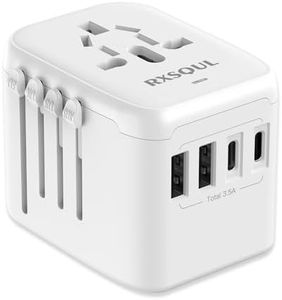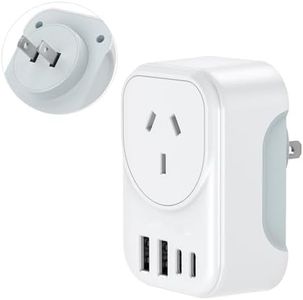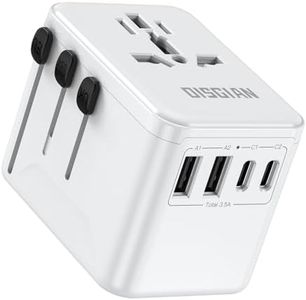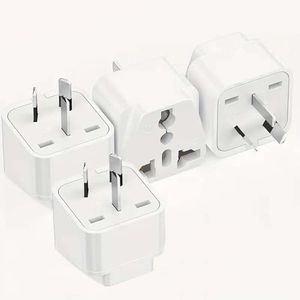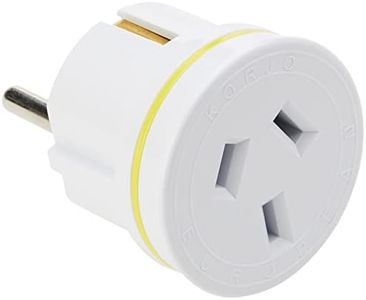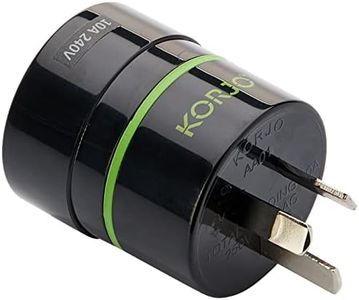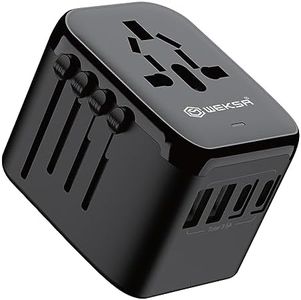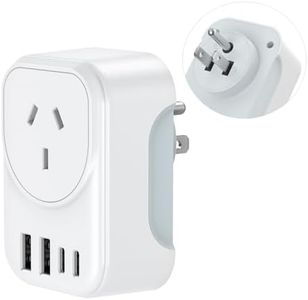We Use CookiesWe use cookies to enhance the security, performance,
functionality and for analytical and promotional activities. By continuing to browse this site you
are agreeing to our privacy policy
10 Best Travel Converters
From leading brands and best sellers available on the web.By clicking on a link to a third party's website, log data is shared with that third party.
Buying Guide for the Best Travel Converters
When shopping for travel converters, the main goal is to ensure your electronics work safely and efficiently in other countries. Different countries use various plug shapes and operate on different voltages, so bringing the right converter can protect your devices and make using them abroad hassle-free. Before choosing a converter, it's important to understand both your devices' needs and the electrical standards of your destination.Plug Type CompatibilityPlug type compatibility refers to the physical shape and configuration of the plug used in different regions. It's important because plug shapes are not universal—what fits in a US outlet won't fit in many European or Asian sockets. Plugs are divided into types (like Type A, Type C, Type G, etc.). To pick the right one, you need to know which plug types are used in your destination country and select a converter that fits those sockets. Multi-region adapters cover several types and are good for travelers visiting multiple countries or who aren’t sure of the specific plug shapes.
Voltage ConversionVoltage conversion is about changing the electrical voltage from one level to another (typically 220-240V to 110-120V or vice versa). This is crucial because plugging a device into an incompatible voltage can damage it or make it unsafe. Some converters simply adapt the plug shape (called 'adapters') but do not change voltage, while 'converters' or 'transformers' do. Devices like laptops or phone chargers are often dual voltage, so they only need a plug adapter; hair dryers or curling irons typically need voltage conversion. You should check your device labels for input voltage range to know if you need just an adapter or an actual voltage converter.
Power Rating (Wattage Capacity)The power rating indicates how much wattage a travel converter can handle safely. If you plug in something that draws more power than the converter supports, it could overheat or fail. Travel converters are usually segmented by the number of watts: low-watt (for phones, cameras, or toothbrushes), and high-watt (for items like hairdryers). To choose the right one, check your device’s wattage requirement—it's often written on the plug or in the manual. Always pick a converter with a rating higher than your device needs.
Size and PortabilitySize and portability describe how big or heavy the converter is. Some converters are compact and light, making them easier to carry in your luggage, while others are bulkier due to added wattage capacity or universal compatibility. If you’re going to be moving around a lot or want to travel light, consider a smaller, simpler adapter. For stationary use or if you’re bringing multiple high-watt devices, a larger model might be justified.
USB Charging PortsMany modern converters include USB charging ports, which allow you to charge phones, tablets, or other devices without needing a separate USB power brick. This is helpful if you have multiple gadgets. USB-A and USB-C ports may be available. To decide, consider how many USB-powered devices you have, and whether you want your converter to handle charging for them or if you’ll bring separate chargers.
Surge ProtectionSurge protection helps shield your devices from sudden spikes in electricity, which can sometimes occur due to unstable power supplies in some regions. While not all adapters or converters include this feature, having it can offer additional safety, especially for sensitive electronics like laptops or phones. If you’re traveling to an area with known power reliability issues, consider this feature more strongly.

